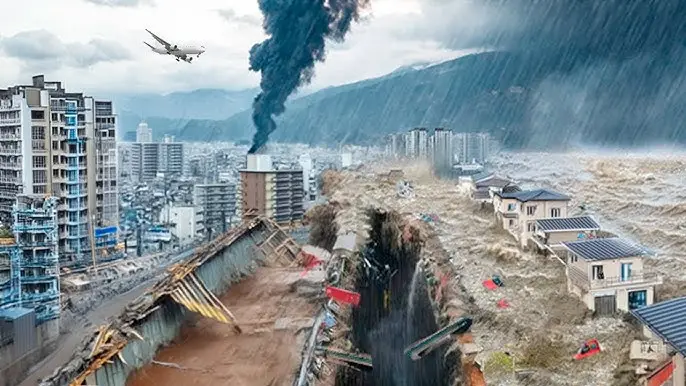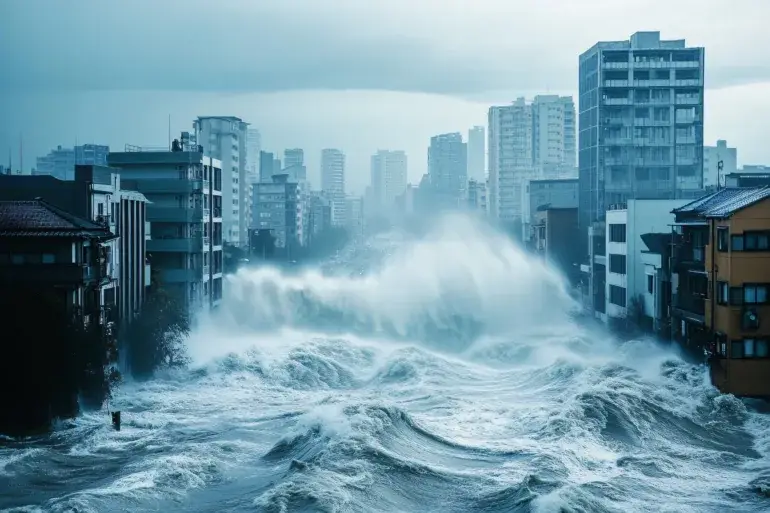Key Points
- The manga doomsday prediction has likely caused a significant drop in tourism to Japan, with reports suggesting a 30% decline in bookings.
- It seems likely that no catastrophic earthquake or tsunami occurred on July 5, 2025, based on available news up to 08:18 AM IST (04:48 AM JST).
- There is controversy, as the prediction has sparked public fear, but Japanese officials and experts dismiss it as unscientific.
Impact on Tourism

The manga prediction, interpreted as forecasting a disaster on July 5, 2025, has spooked tourists, leading to fewer bookings, especially from Hong Kong, China, South Korea, and Taiwan. Airlines like Greater Bay Airlines have canceled flights, contributing to an estimated economic impact of ¥560 billion ($3.9 billion) if tourism declines further.
Official Response
Japanese authorities, including the Japan Meteorological Agency, have dismissed the prediction as unreliable, emphasizing that earthquake prediction is impossible with current science. They urge calm and general disaster preparedness.
Current Situation
As of early July 5, 2025, no major disaster has been reported, with only minor earthquakes (e.g., a 4.6 magnitude near the Tokara Islands) noted, none matching the manga’s catastrophic description.
Detailed Report on Manga Doomsday Prediction and Its Impact on Japanese Tourism

On July 5, 2025, Japan is experiencing heightened public anxiety due to a viral manga prophecy, Watashi ga Mita Mirai (“The Future I Saw”), by artist Ryo Tatsuki. First published in 1999 and reissued in 2021, the manga has been interpreted by some as predicting a catastrophic earthquake and tsunami on this date, described as three times worse than the 2011 Tōhoku disaster. This prediction has significantly impacted tourism, with reports indicating a sharp decline in visitor numbers, particularly from Asian regions. Below, we explore the details, impacts, and official responses, providing a comprehensive overview of the situation as of 08:18 AM IST (04:48 AM JST) on July 5, 2025.
Background of the Prediction
The manga, The Future I Saw, gained attention for its alleged accurate predictions of past disasters, such as the 1995 Kobe earthquake and the 2011 Tōhoku earthquake and tsunami, noted on its cover as a “Major disaster in March 2011.” The 2021 edition has been interpreted as flagging July 5, 2025, as the date of a devastating event, including a powerful eruption in the Philippine Sea triggering a tsunami “three times the height” of the 2011 waves. Tatsuki, often compared to “Japan’s Baba Vanga” for her past predictions, has distanced herself from the exact timing, stating she is “not a prophet.” Despite this, the prophecy has fueled widespread panic, especially on social media platforms like X (formerly Twitter), with hashtags like #July5Disaster trending.
Impact on Tourism
The prediction has led to a significant decline in tourism, with several key impacts noted:
- Booking Decline: Reports suggest a 30% drop in tourism bookings, with Hong Kong arrivals to Japan down 11% year-on-year in May. Travel agencies like EGL Tours have seen their Japan-related business halve.
- Flight Cancellations: Greater Bay Airlines, for instance, has canceled flights to Tokushima from September due to low demand, reflecting broader trends across airlines serving Japan.
- Regional Impact: The decline is particularly pronounced from Hong Kong (down 50-83%), China, South Korea, and Taiwan, with areas like Tokyo, Okinawa, and Mount Fuji seeing fewer visitors.
The economic impact is substantial, with Takahide Kiuchi from Nomura Research Institute estimating potential damages of ¥560 billion ($3.9 billion) if tourism continues to decline. Public sentiment, as seen on social media, ranges from fear and hesitation—e.g., Hong Kong resident Branden Choi (28) delaying trips to after September—to skepticism and humor, with some users mocking the prophecy.
Scientific and Official Response
Japanese authorities and experts have consistently dismissed the manga’s prediction as unscientific. The Japan Meteorological Agency (JMA) has stated that “any such predictions should be considered unreliable,” and seismology professor Robert Geller from the University of Tokyo, with 54 years of experience, has emphasized that earthquake prediction is “impossible.” Governors like Yoshihiro Murai (Miyagi) and Masazumi Gotoda (Tokushima) have urged calm, focusing on general disaster preparedness rather than panic-driven reactions.
This stance is supported by geological context: Japan lies in the Pacific Ocean’s “Ring of Fire,” and recent seismic activity, such as over 1,000 earthquakes in the Tokara Islands since June 21, 2025, has been noted. However, these are mostly small tremors, with the largest recent event being a 5.5-magnitude quake on July 3, 2025, and a 4.6-magnitude quake on July 5, 2025, near the Tokara Islands, none causing significant damage or triggering a tsunami.
Current Situation as of July 5, 2025
As of 08:18 AM IST (04:48 AM JST), no catastrophic earthquake or tsunami has occurred in Japan, aligning with expert views that the manga’s prediction is unfounded. News sources, including Earthquaketrack.com and Kyodo News, report only minor seismic activity today, with the largest being a 5.4-magnitude quake in Naze, Kagoshima, and a 4.6-magnitude quake near the Tokara Islands, neither matching the scale described in the manga. The lack of a major event suggests the prediction has not materialized, though the day is not yet over, and vigilance remains.
Public and Social Media Reaction
Public reaction is mixed, with social media amplifying both fear and skepticism. Memes and discussions on X reflect fatigue with doomsday claims, while others express genuine concern, especially given Japan’s history of natural disasters. The manga’s cult status, with over 1 million copies sold, has contributed to its global attention, though experts stress separating fiction from fact.
Additional Context and Preparedness
The Japanese government is updating preparedness plans, particularly in light of a recent report estimating an 82% chance of a magnitude 7+ earthquake in the Nankai Trough within 30 years, which could cause significant loss of life and economic damage. Feng shui experts have also predicted a major earthquake between June and August 2025, adding to public anxiety, but these claims lack scientific backing.
Summary Table: Key Impacts and Responses
| Aspect | Details |
|---|---|
| Manga Prediction | The Future I Saw by Ryo Tatsuki, interpreted as predicting disaster on July 5, 2025. |
| Tourism Impact | 30% drop in bookings, flight cancellations, economic impact estimated at ¥560 billion. |
| Scientific Stance | JMA and experts dismiss prediction as unreliable; earthquake prediction impossible. |
| Recent Seismic Activity | Over 1,000 quakes since June 21, largest today 5.4 magnitude, no major damage. |
| Government Response | Urging calm, focusing on general disaster preparedness, updating Nankai Trough plans. |
In conclusion, while the manga doomsday prediction has spooked tourists and caused economic impacts, as of early July 5, 2025, no catastrophic event has occurred, and official responses continue to emphasize scientific reasoning and preparedness over fear-driven reactions.
Supporting URLs:
- Reuters: Manga doomsday prediction spooks tourists to Japan
- Times of India: Japan on edge: Manga’s July 5 ‘disaster prophecy’ sparks panic
- Earthquaketrack.com: Today’s Earthquakes in Japan
- Kyodo News: Earthquake alert (automated)

